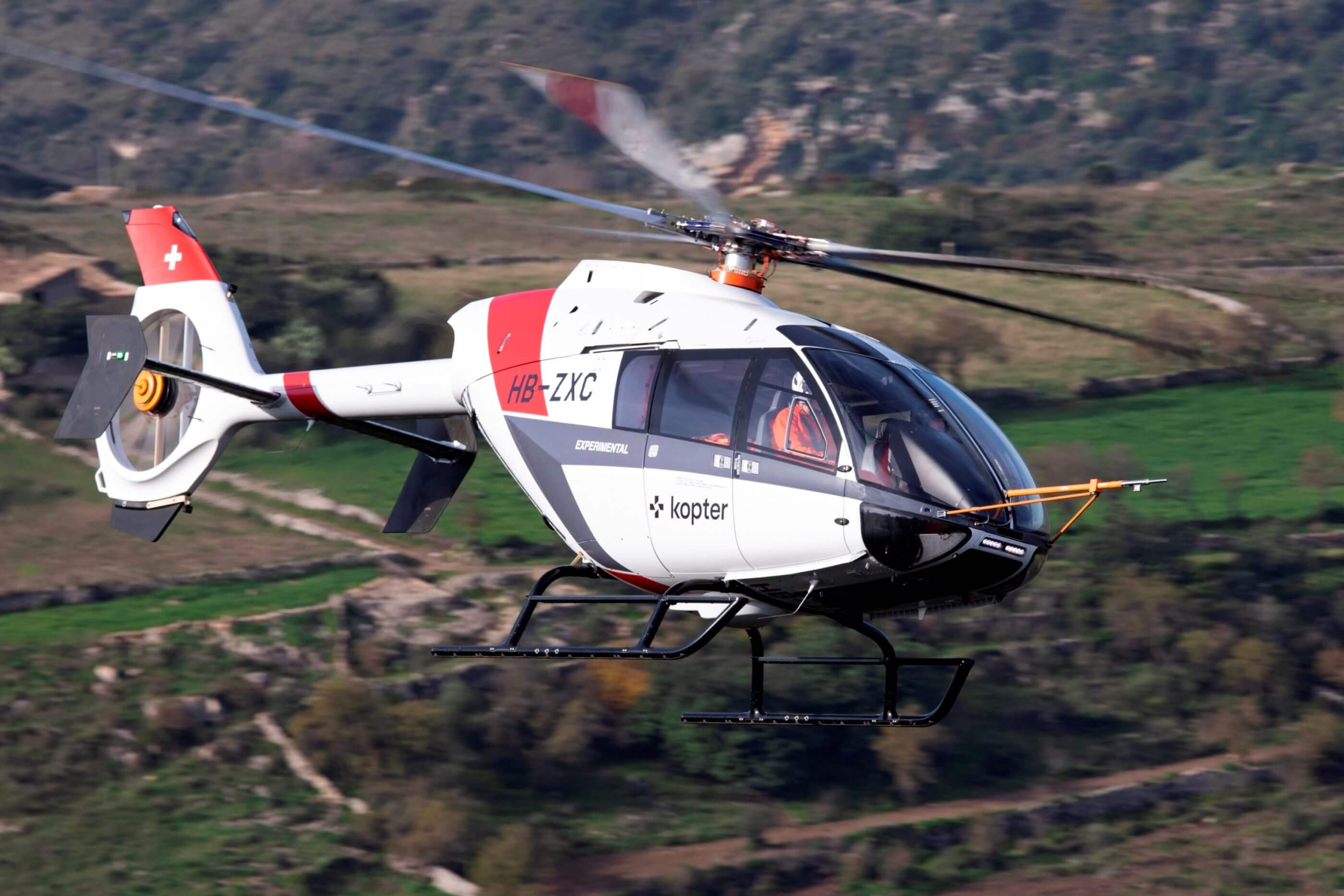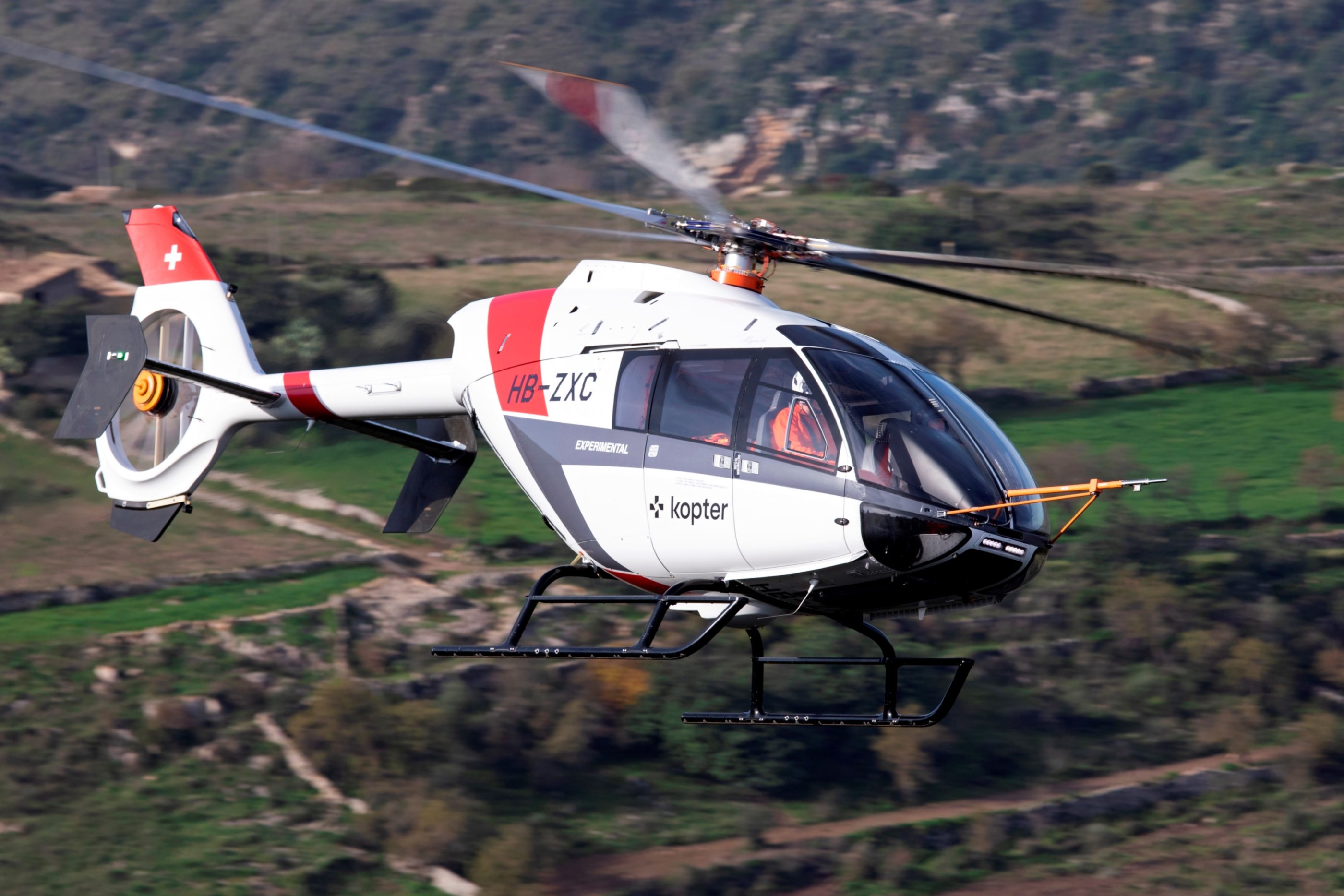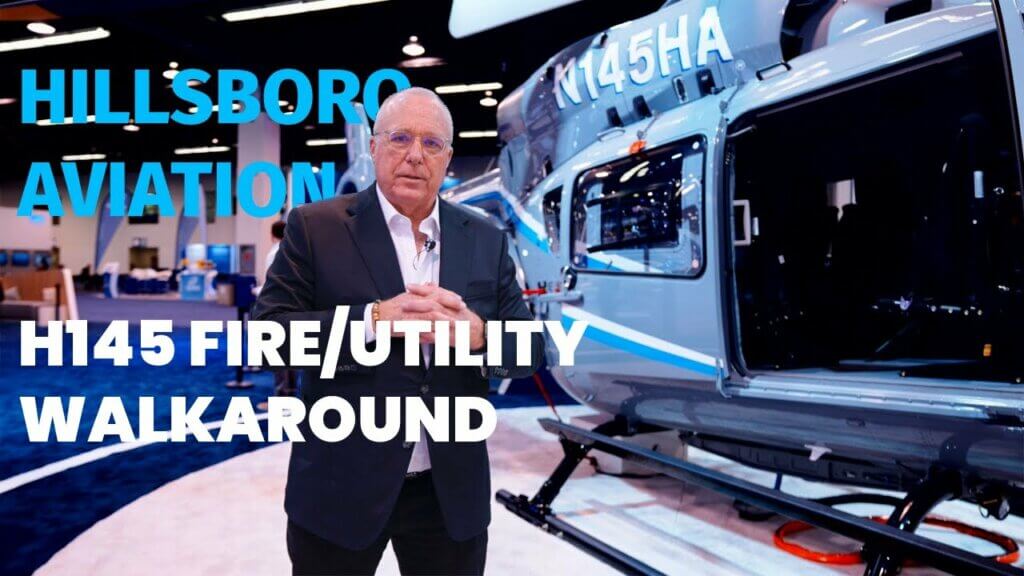Leonardo is to buy Swiss manufacturer Kopter, creator of the upcoming light single SH09, for $185 million, plus an “earn-out mechanism” tied to certain milestones over the life of the program.

In a press release announcing the move, Leonardo said Kopter’s competencies would boost future developments towards more disruptive technologies, mission capabilities and performances, including innovative hybrid/electrical propulsion solutions.
The acquisition, which is expected to close in the first quarter of 2020, will replace Leonardo’s current plans to develop a new single engine helicopter.
“We are proud to welcome this innovative company as an integral part of our world-leading helicopter business,” said Gian Piero Cutillo, managing director of Leonardo Helicopters. “It complements perfectly our existing product portfolio adding a promising rotorcraft that will greatly benefit from our industrial know-how, service and training experience and commercial network.”
Kopter CEO Andreas Löwenstein said the company was “very excited” to have the financial backing of Leonardo. “Within Leonardo, we get the support to finalize our development on various fronts while keeping the ability to remain the agile single-engine pioneer that we are.”
Kopter is still targeting certification of the SH09 by the end of 2020, and plans to deliver an “IFR [instrument flight rules] ready” aircraft to the market.
At a press conference held on the eve of Helicopter Association International Heli-Expo 2020, held in Anaheim, California, the company also revealed the final design of the aircraft, which has been in development since 2009.
The evolution of the design has been informed by over 100 test flights of the third prototype (P3) in Sicily, and includes a new main rotor head and rotor blades, new cowlings, a redesigned shrouded tail rotor, an enlarged rear cabin (that brings maximum capacity to eight passengers and one pilot), a three-cell crashworthy fuel system, an enhanced design for the gearbox, and modified landing skids.
The changes will be incorporated into P3 in stages, with all set to be in place by this summer. Perhaps the most eye-catching element — the new main rotor head and blades — have already been installed on the aircraft, with flights beginning with the new design last week.
Explaining the changes to the main rotor head, Michele Riccobono, the company’s chief technical officer and head of flight operations, said the previous setup provided damping when the blades were subjected to cyclic input — but couldn’t provide collective damping.
“This caused a reaction on the airframe for which the aircraft was every now and then fishtailing,” he said.
Kopter has changed the action of the elastomeric dampers to provide collective damping, and Riccobono said the result has been a “significantly” improved ride quality and stability of the aircraft.
“The comment of Richard Grant, our chief test pilot, after flying the aircraft last week was that it really flies like a perfect aircraft,” he said. “Even without an autopilot, you can even leave the flight controls unattended and the aircraft remains in trim — which is something that is quite difficult to achieve with a helicopter.”
Certification timeline
P3 will share flight test responsibilities for certification with pre-serial four (PS4), which will be completed later this year. Pre-serial five (PS5) will then be used for envelope expansion campaigns, such as hot and high trials in Colorado, and cold trials in Alaska, as well as certification of optional equipment, a four-axis autopilot and IFR. Serial six (S6) will be the first series aircraft, and will be used for a couple of certification tests that require a fully representative serial aircraft that has no test instrumentation.
Riccobono said the capabilities of the Garmin G3000H avionics used in the SH09, combined with the aircraft’s dual hydraulics and redundancies in its design, mean it will be “an easy change” to bring the aircraft to IFR capability.
” ‘IFR ready’ primarily means that the first certification will be VFR [visual flight rules] day and night only, but . . . the real meaning is that a customer taking delivery of an aircraft with these certification type for VFR can later upgrade to IFR with minimal cost, as most of the aircraft is already meeting the certification standard for IFR.”
The change required, he said, would simply be the addition of a four-axis digital autopilot, which the company has already begun working on.
“We want to be ready with the autopilot when the time comes, right after the first TC [type certificate],” said Riccobono.
Currently, the European Aviation Safety Agency (EASA) doesn’t allow single-engine IFR certification, but Bell and Leonardo have recently had success gaining supplemental type certificates from the Federal Aviation Administration (FAA) for the Bell 407GXi and AW119, respectively.
To speed up certification of the baseline aircraft from the FAA, Kopter has gained permission from EASA to have the U.S. regulator involved in its type certification effort – meaning approval from the FAA should follow EASA within “a few months” rather than a year.
Deliveries of the SH09 will begin soon after.
“We are targeting to do this if possible in 2020, so quite a speedy process,” said Löwenstein.
The entry into market will be gradual, with launch customers given extensive support and Kopter receiving operational data in return.
“We will see how the aircraft are flying, and what we have to do better,” said Löwenstein. “This first year will be dedicated to this, and after this launch customer phase, we will deliver in much broader way to other customers.”
‘Competitive’ Pricing
The baseline aircraft will cost around $3.3 million, which, given the aircraft’s capabilities, will make it “quite competitive from the beginning,” said Löwenstein. He drew particular attention to the SH09’s suitability for the emergency medical services (EMS) sector, providing a cabin the size of a twin-engine aircraft for the cost of a single-engine helicopter.
“You can bring it to a single [engine] IFR standard very quickly, [so] you will be able to do most of the missions which are normally dedicated to light twins,” he said. “Then we are talking about something totally different: Instead of $12 million for an outfitted medical helicopter in the twin segment, you would talk more about $4.5 to $5 million for an equivalent for a medical helicopter built on the SH09 platform.”
While declining to provide numbers for operating cost, he said Kopter was designing the aircraft to achieve a very competitive figure.
“We have features that will allow you to bring the operating cost to a very reasonable level,” he said.
The company currently has more than 70 orders for the SH09, as well as more than 100 letters of intent. The orders represent a similar spread to the overall global helicopter fleet, said Löwenstein, and are from operators from a wide variety of sectors, including EMS, public service, passenger transport, and aerial tourism.
The order book covers the first three years of production, with the company now taking orders for delivery in 2024/25.
Kopter plans to increase its staff and capabilities as it ramps up to prepare for the type’s certification. Currently it has 320 staff, with over 200 of those in the design organization.
It has begun work on a substantial expansion to its facility in Mollis, Switzerland, which is currently the site of its assembly, training and production work. The 4,200-square-meter facility will be expanded to 20,000 square meters, and it will be home to a centralized organization, incorporating manufacturing and pre-assembly, including production of dynamic components. The expected annual production rate at the facility is 50 aircraft.
In tandem, the company is preparing its 9,000-square-meter site in Lafayette, Lousiana, which will assemble and customize aircraft, and offer product support for the North American market. This site can manufacture 100 aircraft each year, said Löwenstein.
Currently, the manufacturer has seven distributors under contract, and this will have grown to 12 by the end of this year. Service centers are to be deployed in parallel, Löwenstein added.
In terms of future development, Löwenstein said Kopter plans to have “more than one” product, but declined to provide details.
“A lot of things that can be done in terms of CO2 emissions, reliability of flight systems, and the use of modern electronics to equally contribute to flight safety — which means more autonomous flying,” he said.
“What size [of aircraft] for me is, for the time being . . . not prime. What I do more is [technology] bricks, and these bricks will be put on the most suitable platform for the most demanding market segments.”









